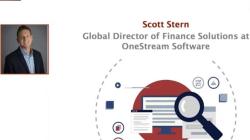Two years ago, the company moved away from our annual budget and monthly variance reports, and adopted quarterly rolling forecasts supported by key performance indicators and scorecards. Is this approach useful to a line manager?
One of the advantages of working in the domain of FP&A is that it provides excellent opportunity to learn about many aspects of the business. This enables the individual to, not only do the job with a more solid ground, but to also get a better picture of what and how is done in the other departments. Additionally, working closely with colleagues from different functions increases one’s visibility in the organization. But how do you get started in FP&A?
“Go to the cloud” has been a key building block in every global CIO’s digital strategy. However, as the CFO, do you find yourself getting into frequent arguments with them over the savings promised at the time of embarking on this journey?
Many of us have heard about promise of predictive analytics (PA) in machine learning (ML). Over 50% of organisations think that data science and ML are critical for success. At the same time, less than 20% of finance teams are deploying data science today. Why did this happen?
FP&A helps create sources of future value whilst being on top of how much value is being created at present. Neither of these two things is as easy to measure at any one point in time. So, how can we answer the question “is FP&A delivering what is expected of it”?
The way a company FP&A suite is organised (i.e. its setup) covers the way data are organised and analysed, the way the reporting and the forecasting are produced and performances are measured. What will qualify as the best FP&A set up? How will it be accepted by the company?
Pagination
Subscribe to
FP&A Trends Digest

We will regularly update you on the latest trends and developments in FP&A. Take the opportunity to have articles written by finance thought leaders delivered directly to your inbox; watch compelling webinars; connect with like-minded professionals; and become a part of our global community.






